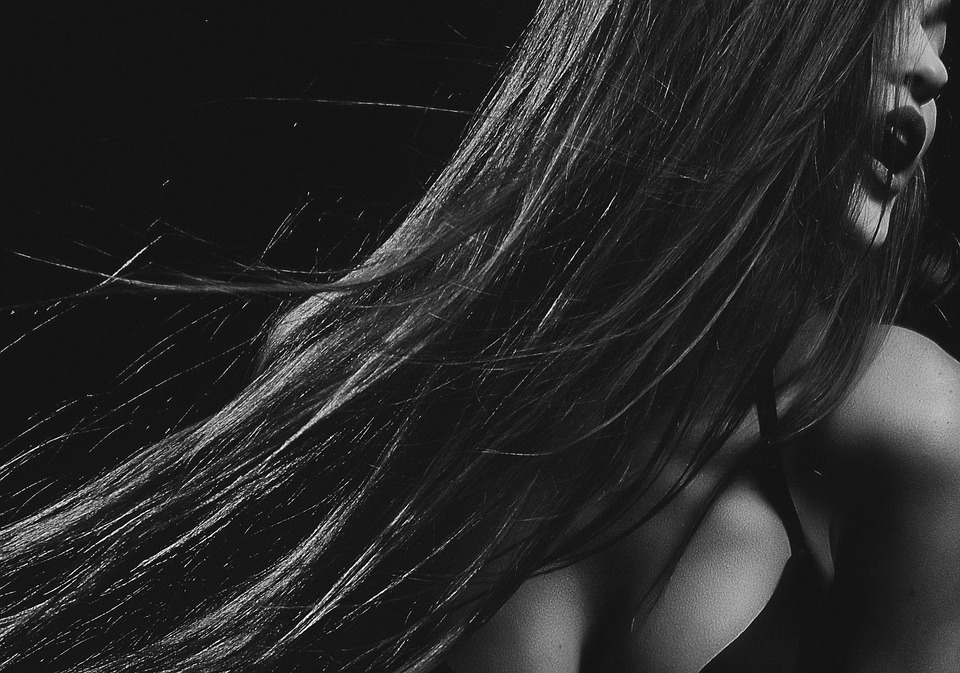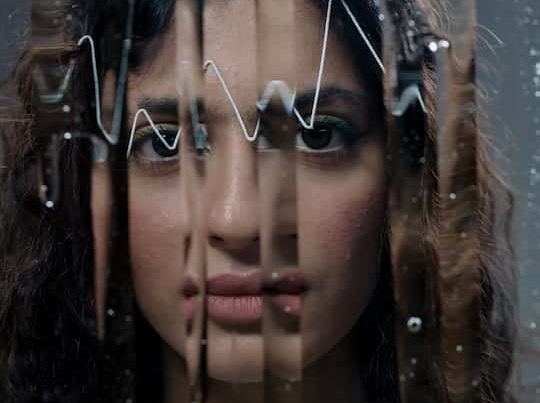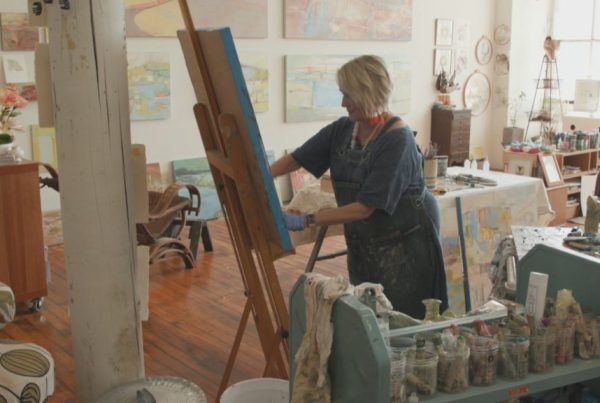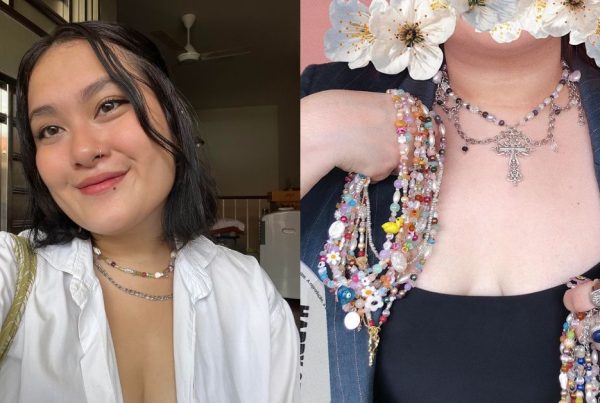Taste words or hear colors. Every 20th person is a synaesthete and yet the phenomenon is still not widely known. Ignorance is a problem and can even make you ill, warns psychiatrist Markus Zedler. A glimpse into a world that sounds like science fiction to outsiders. But it is scientifically proven.
When Anna Mandel was just seven years old, she was sitting at the kitchen table with her cousin. A family celebration rages around them. Relatives and acquaintances, noise, cream cake and in between her cousin’s statement that the five was brown. But that couldn’t be, because the five is red. Always. At least for Anna.
Like her cousin, Anna is a synesthete. For them, sensory perceptions are linked. Words, numbers, even thoughts and feelings are colored for them. And when Anna sings, she sees architectural forms. For example, a scaffold made of stainless steel that you can walk into. Or a smaller one made of yellow plush with a bow.
And Anna has another special, rather rare form of synaesthesia, the so-called mirror-touch synaesthesia. She feels touches or pain inflicted on other people, mirrored on her own body – even if she only sees the scene in the film.
That sounds crazy, but it’s not. It can even be scientifically proven.
Synesthesia is a gift – not a disease, hallucination or imagination
“Around ten or twenty years ago, synaesthesia was dismissed as imagination, hallucination or conceit,” explains Markus Zedler Senior Physician at the Hannover Medical School and one of the few experts on synaesthesia in Germany.
“Synaesthesia is a neurological phenomenon in healthy people,” emphasizes the psychiatrist, “a talent.” The senses could be fused in over 150 different ways. Every synaesthete experiences the codes individually. So a five can be brown, red, or a completely different color. Personality traits such as sporty, friendly or insidious can also be associated with the number.
In the nuclear spin, different areas of the brain light up in parallel
The sensory mixtures can be scientifically proven, explains the expert. Nuclear spin, which depicts the metabolism in the brain, shows that different areas of the brain, such as the auditory and visual centers, are active at the same time in synaesthetes.
“When a synesthete is in MRI and I press a piano key, the auditory center and the visual center, for example, are activated.” Anna says: “The scientific evidence is important so that we are not declared crazy.”
“The thing with the scientific evidence is important that we are not declared crazy.”
Anna Mandel
Psychiatrist Zedler: “Every 20th has synaesthesia”
With her many synaesthesias, including mirror touch, and an additional giftedness, Anna is a special case. But synaesthesia, usually several in parallel, is no longer as rare a phenomenon as was previously assumed.
“One study assumes that about five percent of humanity is involved,” says Zedler. “That means at least every 20th has synaesthesia.” However, many do not know it or could not name it for a long time.
How does synesthesia arise?
That has not yet been finally clarified. Familial accumulation suggests genetic inheritance. Zedler emphasizes that other concepts that are not mutually exclusive are also being discussed.
One theory states that up to the age of three months, everyone has the nerve connections in the brain that are typical of synesthetes. Synesthetes are said to possess genes that prevent these bonds from atrophying as nature intended. The so-called hyperbinding, i.e. an additional level of consciousness, is also being debated, as is cross-activation of neighboring or functionally close sensory areas and a lack of inhibition functions.
“Here with your pencil, that was mirror touch now”
Anna and her cousin also do not talk to their parents about their perceptions. “It was maybe exhausting at times,” she says. “But I would never have given up my synaesthesia.” But of course she would have had to find her way first. Learn to deal with the “triggers”.
For example: “Have you heard of shark finning? The fin is cut off from a live shark. He then tumbles to the bottom of the sea, completely unable to move, where he lies and dies.” Her mirror-touch synesthesia makes her feel the pain physically. “It’s unbearable.” She also doesn’t eat meat – “of course” – and heads a marine conservation organization.
The second example happens in the middle of the video interview: I (the editor) mentally draw the pencil over my neck and get stuck in the small hollow below the larynx. Completely subconscious. Until Anna gasps and grabs her own neck. “Here with your pencil, that was mirror-touch now,” she explains.
As a synesthete one is almost always “overwhelmed”, says Anna. It feels a little like being “permanently on LSD.” Techniques to calm down help her – meditation, yoga, breathing exercises, going out into nature.
Those around you also know about their triggers. If her sons want to show her a film, they often say: “Mom, now you have to close your eyes and cover your ears.”
On the other hand, the bright things are of course particularly bright. “When I see a picture of someone walking over fresh snow to a church in the morning and the sun is shining. Then I smell it. Then I feel the sun rise.”
“When I see a picture of someone walking over fresh snow to a church in the morning and the sun is shining. Then I smell it. Then I feel the sun rise.”
Anna Mandel
For Anna, it’s like this: “Thanks to the synaesthesia, my world is rich, intense, networked, in flow, and I deal much more directly with wonderful people who feel and experience just as intensely.”
But it is important to look for a field in which you can use your talent, she says, also as a tip for other synesthetes. For them it is art. She studied philosophy and sculpture, worked as an improvisational singer. Today, Anna is a full-time artist and runs a marine conservation organization. “Well actually, as an artist, I’m a marine conservationist – sounds weird, but that combination is very synnie,” she says.
Kandinsky, Lady Gaga or Hélène Grimaud: synaesthesia is widespread among artists
So Anna fits into the picture. Synaesthesia seems to be widespread, especially among artists. “Their art is more multifaceted, more flowery, because they experience it emotionally more strongly,” explains Zedler. Wassily Kandinsky and Franz Liszt, for example, were famous synesthetes. And nowadays Lady Gaga, Hélène Grimaud, Billie Eilish or Hans Zimmer.
Zedler also describes synaesthesia as “a stroke of luck that everyone can be happy about”. However: it becomes a problem if it is not recognized or misdiagnosed. Unfortunately, this is relatively common and often not bad intentions, rather ignorance.
“When worried parents report that their child sees letters and days of the week in clear colors or experiences numbers as beings with personality traits, then they often encounter initial concern or even helplessness, even among experts.” A misdiagnosed mental illness could possibly have fatal consequences with the wrong medication.
Anna also remembers a tip that she and other synaesthetes received in the early 90s: “Don’t tell any doctor about it, who diagnoses schizophrenia and prescribes psychotropic drugs.”
Mental illness as a dangerous misdiagnosis
According to Zedler, the opposite is the case. Much more communication takes place in the “hyperconnective” brain of synesthetes. They are therefore particularly performance-oriented, very intuitive, very socially competent and understand faster.
And they are considered to be less prone to mental illness. “We assume that synesthesia represents a certain protective factor,” he says. He hopes that further research might even lead to better treatments for mental illness.
In any case, one can learn from synaesthetes. “How do you protect yourself from overwhelming situations? keyword resilience. Her techniques, such as meditation or breathing, can help anyone in a stressful situation.” Above all, education about synaesthesia is important to Zedler. “And through that knowledge and understanding.”
Just like with Anna. When she was finally able to name why she felt the way she felt, her mother would have cried all night. “She told me that now, after 30 years, she finally understands me.”
According to the German Synaesthesia Society, these are the most common forms of synaesthesia
- Grapheme Color Synesthesia: Letters and/or numbers are inextricably linked to a color impression
- Colored Hearing: Sounds and/or music are simultaneously perceived in color and/or shape
- Sequence Space Synesthesia: Units of time such as days of the week, months, the year or numbers have a specific spatial arrangement or position in the mind’s eye
- Ordinal Linguistic Personification (OLP): Graphemes are not only assigned color and shape, but also gender, character traits and, if necessary, emotions.
- Feeling Synesthesia: Emotional states are perceived in color and/or as shape.
- Person Color Synesthesia: Personalities are assigned a characteristic color. It is also possible to assign digits.
- Ticker-Tape-Synästhesie: Perception of spoken, heard, thought words as “news ticker” or by the words appearing in front of the inner eye for fractions of a second.
- Lexical-gustatory Synästhesie: Words have a specific flavor and/or texture felt on the tongue.
- Other Synasesthesia Forms: Often will too flavors, smellsor body sensationssuch as pain accompanied by a synesthetic visual sensation.
Source: Through synesthesia, Anna feels other people’s pain-breakinglatest.news-Breaking Latest News













